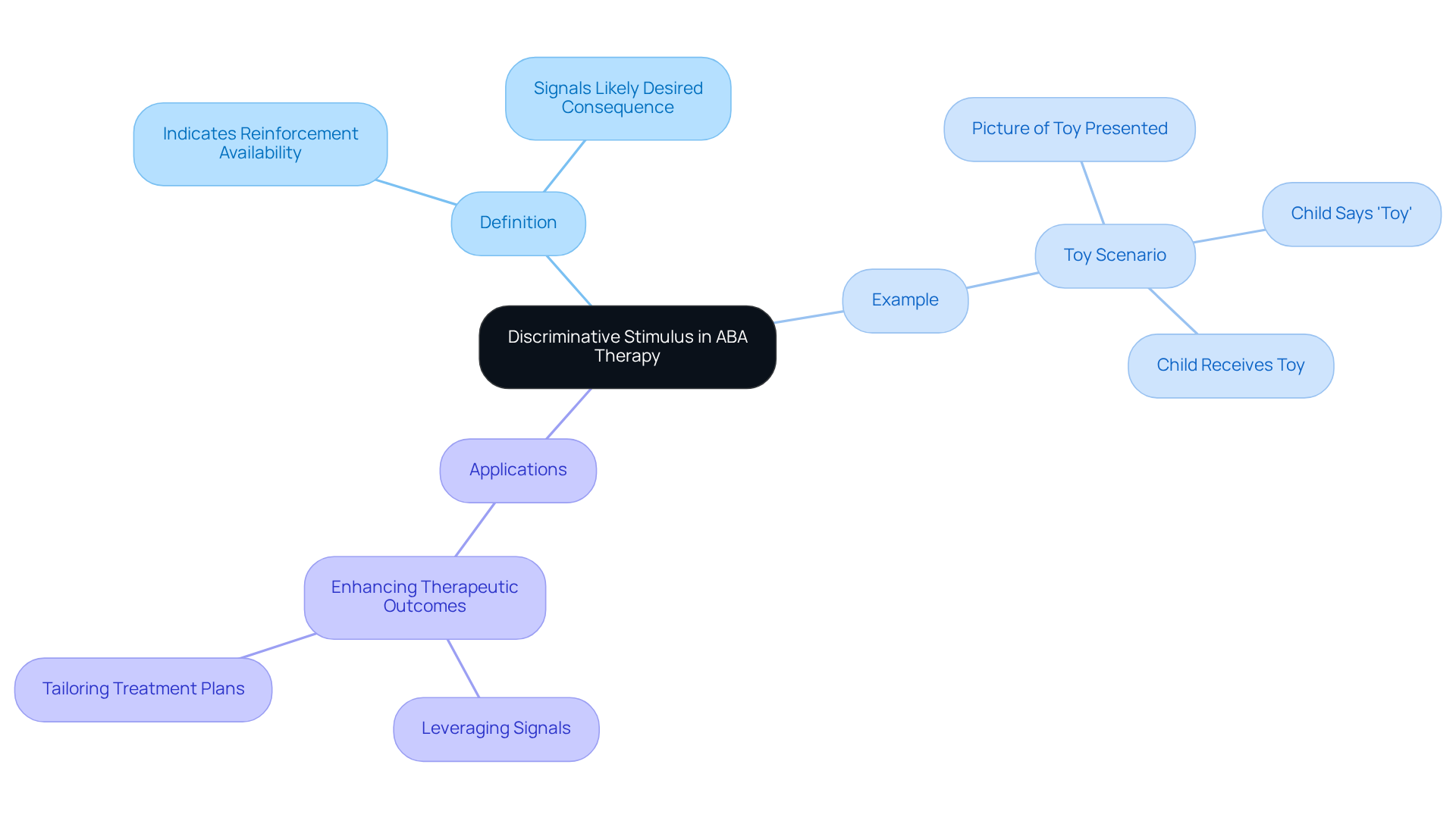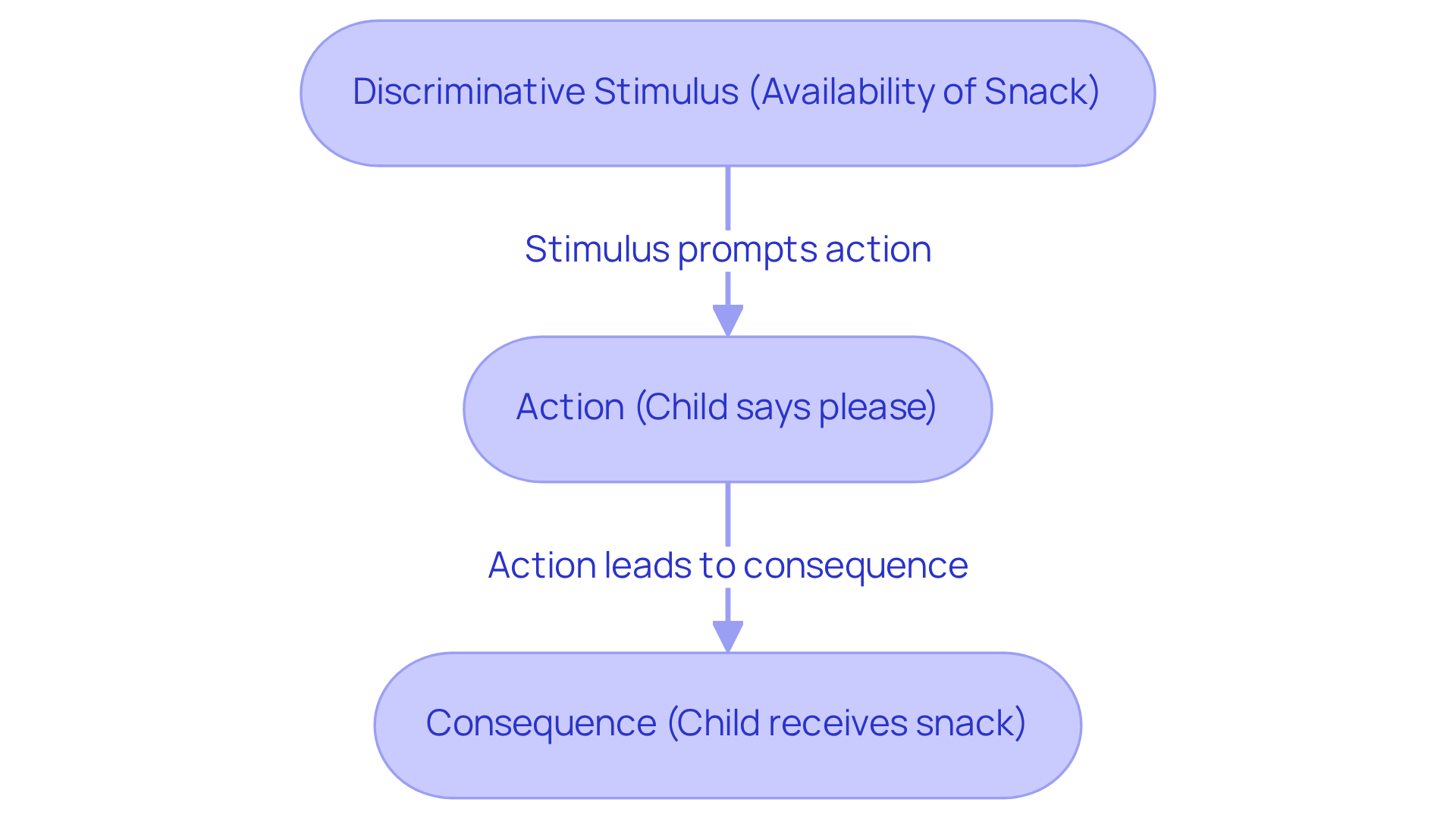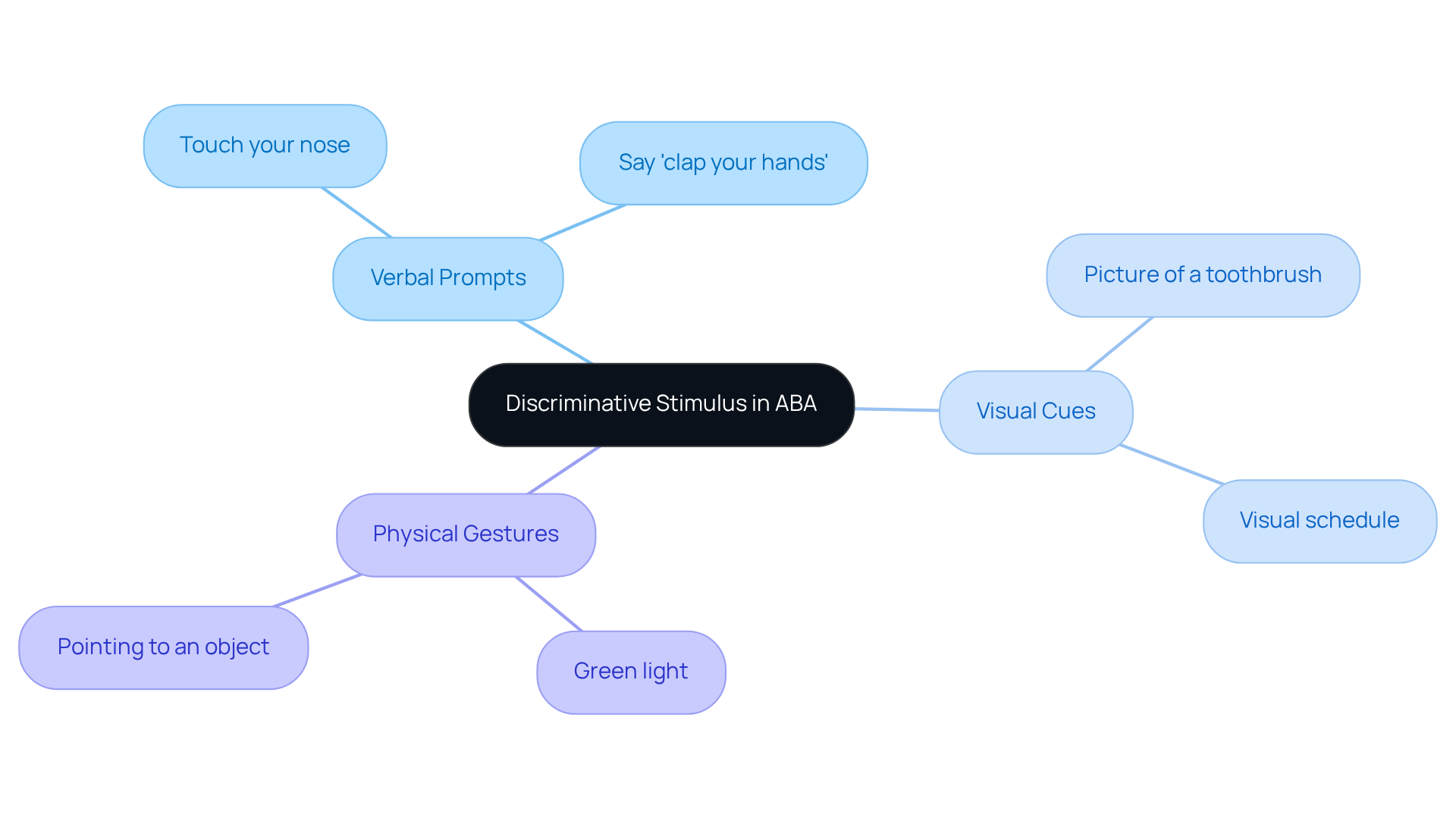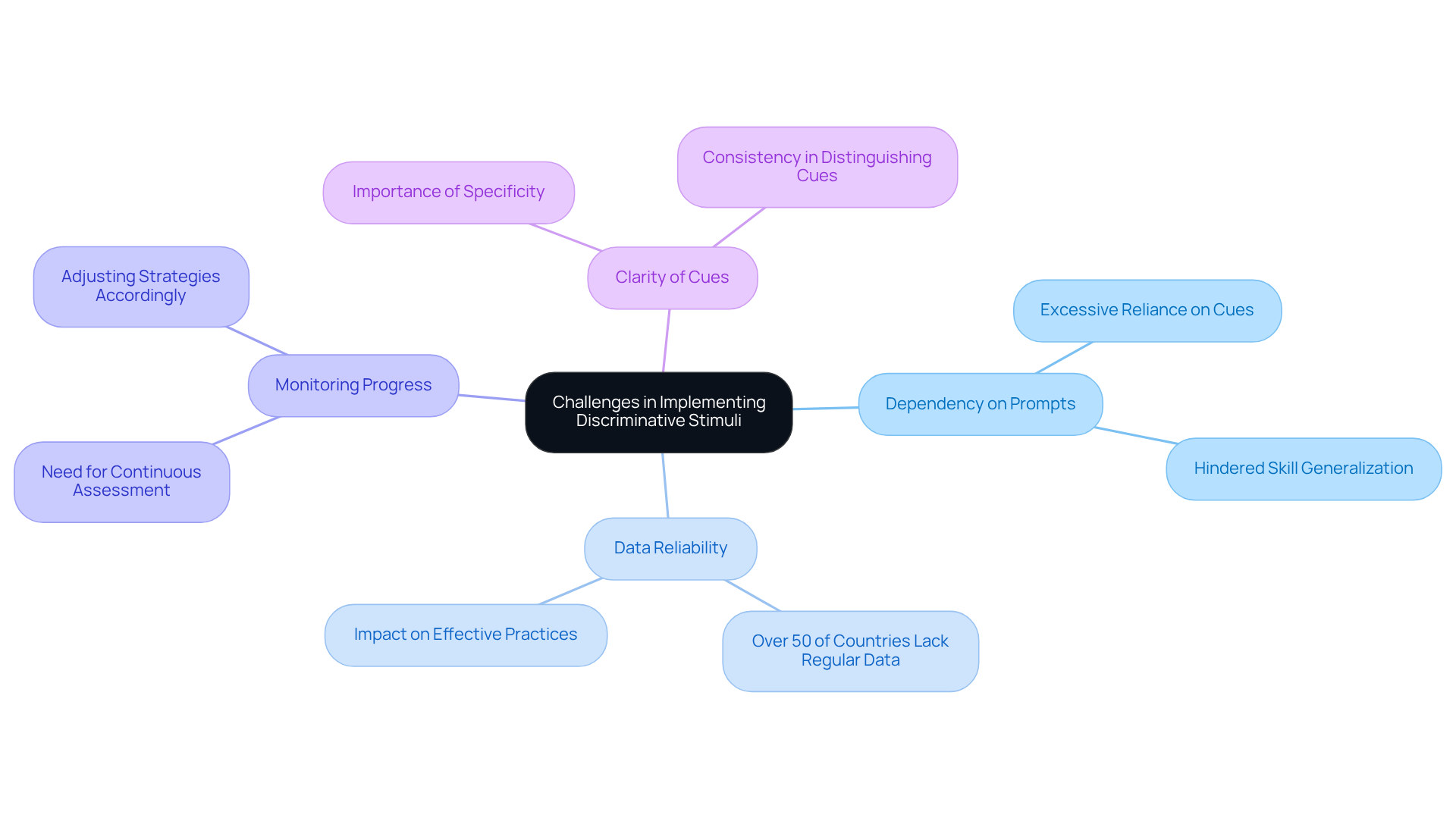July 4, 2025

Discriminative stimulus in ABA therapy signifies environmental signals that indicate the availability of reinforcement for specific actions, thereby guiding behavior modification. Understanding and effectively implementing these stimuli is crucial for enhancing therapeutic outcomes. They clarify the relationship between actions and their consequences, ultimately fostering skill acquisition and positive behavioral changes.
Understanding the nuances of discriminative stimuli in Applied Behavior Analysis (ABA) therapy is essential for maximizing therapeutic effectiveness. These environmental signals not only indicate the potential for reinforcement but also play a pivotal role in shaping behavior and enhancing learning outcomes. As practitioners delve into the intricacies of these stimuli, they may encounter challenges that raise critical questions:
Addressing these questions is crucial for effective practice and optimal client outcomes.
In Applied Behavior Analysis (ABA) therapy, a discriminative stimulus aba indicates the availability of reinforcement for a certain action through a specific environmental signal or event. This signal functions as a discriminative stimulus aba, indicating to the individual that performing a specific action is likely to yield a desired consequence or reward.
For example, when a therapist presents a picture of a toy, this image serves as a discriminative stimulus aba, signaling to the child that saying 'toy' will result in receiving the toy. Understanding this concept is essential for effectively .
How can you leverage such signals to enhance therapeutic outcomes?

In Applied Behavior Analysis (ABA) therapy, the discriminative stimulus aba is crucial for distinguishing signals that facilitate behavioral changes. They are a fundamental component of the three-term contingency model, which encompasses the discriminative stimulus aba (the distinguishing signal), the action, and the consequence (reinforcement).
When a specific action receives in the presence of a discriminative stimulus aba, the likelihood of that action being repeated in similar contexts increases significantly. This mechanism is crucial for teaching new skills and behaviors, as it clarifies the relationship between actions and their outcomes.
For example, a child may learn to say 'please' when requesting a snack if the availability of the snack (the distinguishing factor) consistently results in receiving it when polite language is used.
Current trends in behavior modification strategies underscore the strategic use of specific cues to enhance learning and foster positive behavioral outcomes, illustrating the effectiveness of this approach across various therapeutic environments.

Discriminative stimulus ABA manifests in various forms, including verbal prompts, visual cues, and physical gestures. For instance, a therapist might employ a verbal cue such as 'touch your nose' to prompt a child to perform the action. Similarly, a , like a picture of a toothbrush, signals to a child that it is time to brush their teeth. In these scenarios, the presence of the discriminative stimulus aba indicates that executing the desired action will lead to reinforcement, whether through praise or a tangible reward.
Consider the use of a green light; it signals safety for crossing the street, teaching children to associate the light with the appropriate action of walking safely. Research indicates that the success rates of various prompts in ABA therapy can vary, and the discriminative stimulus aba often yields higher engagement levels among children. By effectively utilizing both verbal and visual signals as distinguishing influences, therapists can create an organized environment that fosters learning and reinforces positive behaviors.

Implementing discriminative stimulus ABA in therapy presents several significant challenges. One prevalent concern is the excessive dependence on prompts; clients may develop a reliance on cues that can complicate their ability to act independently when these supports are absent. Research indicates that such dependency can hinder the across various contexts.
Moreover, over 50% of countries may not produce regular data, which adversely affects the implementation of effective practices in ABA therapy, underscoring the broader challenges faced in the field. Therefore, it is imperative for therapists to closely monitor progress and adapt their strategies accordingly.
Gradually reducing the frequency of prompts while reinforcing independent behavior is essential for fostering skill generalization. Additionally, the clarity and consistency of the distinguishing cues used are vital for effective learning. Ensuring that stimuli are specific and easily distinguishable significantly enhances the likelihood of successful outcomes, empowering clients to respond appropriately in diverse situations.
As noted by experts, recognizing the role of a discriminative stimulus ABA within therapy sessions is critical for bridging theoretical knowledge with practical application.

Understanding the role of discriminative stimuli in ABA therapy is crucial for enhancing therapeutic effectiveness. These stimuli serve as environmental signals that indicate when specific actions are likely to lead to reinforcement, thereby guiding individuals toward desired behaviors. By effectively utilizing discriminative stimuli, therapists can create structured environments that promote learning and facilitate positive behavioral changes.
The fundamental aspects of discriminative stimuli include:
Strategic use of verbal, visual, and physical cues can significantly enhance engagement and learning outcomes in therapy settings. However, it is essential to be mindful of potential challenges, such as the over-reliance on prompts, which may hinder skill generalization and independent functioning.
Recognizing and applying the principles of discriminative stimuli in therapy not only empowers clients but also fosters an environment conducive to effective learning. By addressing the challenges associated with their use, therapists can enhance the overall impact of ABA therapy, ensuring that clients are equipped with the skills they need to thrive across various contexts. Embracing these strategies can lead to more successful therapeutic outcomes and a deeper understanding of behavior modification in practice.
What is a discriminative stimulus in ABA therapy?
A discriminative stimulus in ABA therapy indicates the availability of reinforcement for a specific action through a particular environmental signal or event.
How does a discriminative stimulus function in ABA therapy?
It signals to the individual that performing a specific action is likely to yield a desired consequence or reward.
Can you provide an example of a discriminative stimulus in practice?
An example is when a therapist presents a picture of a toy, which signals to the child that saying 'toy' will result in receiving the toy.
Why is understanding discriminative stimuli important in ABA therapy?
Understanding this concept is essential for effectively influencing actions within therapeutic environments.
Our expert recruitment strategies and AI-driven sourcing ensure that you receive top-notch candidates quickly, without compromising on quality. Whether you’re looking for BCBAs, Clinical Directors, or RBTs, we’ve got you covered.